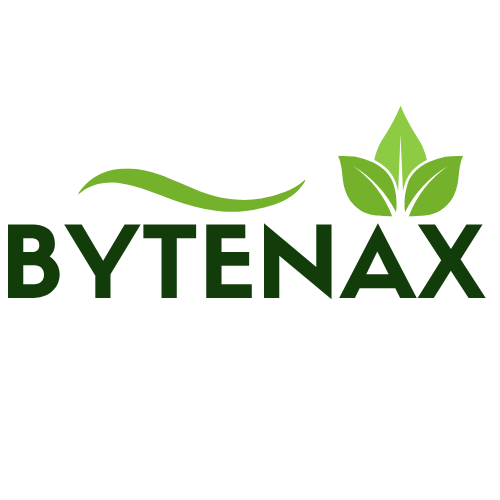Aankondigingen
measure foodtech results is the practical first step you take when clarity matters more than dashboards. You’ll learn why right‑sized KPIs help you focus on outcomes that matter across product, operations, and finance.
You face a fast‑growing market: global market size topped USD 202.62 billion in 2024 and is set to expand toward USD 515.83 billion by 2034. That growth makes simple signals—revenue, orders, and unit economics—vital for weekly action.
In this short report you get clear, usable analysis of how hardware strength, software acceleration, and delivery growth shape which metrics to prioritize. Follow practical tracking that aligns teams and investors, and consult qualified professionals for health guidance as you explore culinary culture and product ideas.
For benchmark context and key KPI examples, see an essential guide to industry metrics for food and beverage manufacturers.
Introduction: Why you should measure foodtech results now
Shifting demand and rapid digital adoption mean clear metrics beat complex dashboards today.
Aankondigingen
The global food technology market is already large and fast‑moving. In 2024 it hit USD 202.62 billion and is on track to grow sharply by 2034. That size and speed create volatility in supply, consumer tastes, and delivery expectations.
Present market dynamics and why simple beats complex
When everything changes quickly, simple KPIs give you usable signal. Software and delivery are the main growth engines, while APAC holds roughly a third of the market share.
How “right-sized” KPIs guide better product and operations decisions
Right-sized KPIs cut noise and link product fit, operational reliability, and margin. They help teams act faster on activation, repeat orders, and fulfillment accuracy.
Aankondigingen
- You’ll prioritize traceability and waste metrics as regulations and sustainability goals tighten.
- Use lightweight instrumentation and AI-assisted analysis only when the team adopts it.
- Agree early on a small metric set, targets, and a review cadence to align stakeholders.
Market context at a glance: Size, growth, and where value is shifting
Big numbers and clear shares help you pick the KPIs that matter most.
The global market grew from USD 202.62B in 2024 toward an estimated USD 515.83B by 2034, roughly a 9.8% CAGR. That scale changes how companies prioritize product, ops, and sales metrics.
Hardware held about a 43% share in 2024, while software is the fastest-growing segment at ~11.13% CAGR. Asia-Pacific accounts for roughly 33% of market size, and North America leads in growth speed.
- Anchor KPIs to the part of the sector you serve—hardware-driven teams track uptime and throughput, software plays track activation and retention.
- Delivery and food science management show rapid adoption; link service KPIs to repeat purchase and margin.
- Account for category differences: meat and seafood volumes matter for cold-chain and safety, while dairy shows fast development and reformulation opportunity.
FAO estimates ~1.3B tons of food waste globally, a reminder that sustainability metrics affect margin and inventory control.
Who should use this measurement framework
If you lead a kitchen, a startup, or an investor portfolio, this guide gives practical signals you can act on. This is for founders, operators, culinary leads, product managers, ops leaders, and U.S. investors who need one clear scoreboard.
Why it fits your role:
- You’ll benefit if you run an early-stage food venture and need a simple scoreboard to align your small team.
- You’ll benefit if you lead product or culinary development and want to tie reformulation, menu changes, or packaging updates to clear outcomes.
- You’ll benefit if you manage operations in delivery, dark kitchens, or store picking and need day-to-day performance signals.
- Regional grocery e-commerce owners get clean growth and unit economics metrics to guide investment.
- Investors and advisors gain a consistent way to compare teams across market segments and stage.
- QA, sustainability, and partnership leads can place quality and share proxies next to growth and cost.
Keep it practical: the framework reflects a market where hardware led share in 2024, software is the fastest-growing segment, APAC holds ~33% of market size, and delivery is the fastest-growing application. Use this to align products, consumers, and business priorities.
Simple growth KPIs every food tech team can track
Track a handful of growth KPIs and you’ll cut distraction and spot trends fast. Keep the set small: one revenue line, orders, average order value, and a simple market share proxy.
Monthly recurring revenue and order volume
MRR shows subscription stability. Pair monthly orders with MRR to reveal seasonality and promo effects. Trend these side by side weekly to avoid daily noise and false alarms.
Average order value and basket mix
Calculate AOV = total revenue / total orders. Break AOV by channel (website vs. app). Track basket mix to see shifts across produce, dairy, and meat alternatives.
Market share proxies using public data and partner dashboards
Use partner dashboards to compare your orders vs. regional delivery volume. Compare web traffic to category benchmarks; websites have led revenue share in some studies (~54.09%) and online grocery holds notable share (~35.68%), so channel splits matter.
- Set alerts: if orders outpace MRR, check discounts or AOV loss.
- Segment AOV by channel to find quick UX wins.
- Combine AOV with item margin to protect unit economics.
Unit economics that signal real scalability
Track the dollars behind each order to spot scalable opportunities and risks. A compact unit-economics sheet connects finance and operations so you can act fast.
Customer acquisition, payback, and LTV basics
CAC = total acquisition spend ÷ new customers. Track payback as cumulative gross profit until CAC is recovered.
Model LTV conservatively using retention and margin assumptions. Revisit quarterly as cohorts mature and new data arrive.
Contribution margin by product line
Build a contribution margin for plant-based, dairy, and meat lines. Connect fulfillment and last‑mile fees to each SKU so margins stay realistic.
Churn and retention cohorts
Run monthly cohort views for delivery vs. subscription to compare reorder frequency and churn. Include discounts, refunds, and refunds in the unit model so payback isn’t overstated.
- Use sensitivity checks (AOV ±5%, retention ±5%) to bracket LTV ranges.
- Consider moving low‑margin items to pickup to protect contribution margin.
- Socialize one simple unit economics sheet with finance and ops for shared decisions.
Operations and delivery performance, simplified
A simple operational scoreboard keeps late orders, wrong items, and rising last‑mile costs from eroding margin.
Keep ops metrics tight and weekly. Track on‑time rate, fulfillment accuracy, and cost per drop so you can act quickly.
On-time rate by hour and zone
On‑time rate = (on‑time deliveries ÷ total deliveries) × 100. Target 95%+ for core urban zones and 90% for fringe areas.
Track by hour and zone. If a zone dips, change routing or shift starts that day. DoorDash and other U.S. delivery leaders show how hour‑by‑hour competition raises customer expectations.
Fulfillment accuracy and last‑mile cost per drop
Fulfillment accuracy = (correct, undamaged orders ÷ total orders) × 100. Aim for 99% in high‑volume SKUs.
Last‑mile cost per drop = (labor + platform fees + packaging + failed delivery costs) ÷ successful drops. Flag lanes > target and run experiments (batch windows, dynamic slots) to lower cost.
Picks per hour and shrink in dark kitchens and stores
Track picks per hour and shrink (lost or damaged items). Use scanners and guided pick paths to raise picks/hour without big capital.
Add cold‑chain checks at dispatch and arrival to cut spoilage and refunds. Compare carriers and zones so you can change SLAs or focus on profitable areas.
- Weekly ops: on‑time by hour/zone; action if
- Error review: top 3 error codes and corrective step per week.
- Small experiments: batch sizes or slot pricing, measure impact on on‑time and cost per drop.
Keep dashboards simple: green/yellow/red, a trend line, and one call‑to‑action per metric owner. Link these metrics to repeat purchase and unit economics so ops decisions support growth and quality.
Product quality and safety metrics that build trust
Building cultural trust starts with simple, repeatable quality signals across every shift.
Track complaint rate per 1,000 orders and tag each case by damage, temperature, or labeling so you can fix the largest pain points first.
Complaint rate, reformulation cycle time, and sensory pass rate
Log reformulation cycle time from issue ID to validated release. Short cycles help you adapt products and reduce repeat complaints.
Use a brief sensory protocol with a clear pass rate target to protect consistency for returning consumers.
FSMA-aligned audit pass rate and recall response time
- Track internal audit pass rate by facility against FSMA or local rules.
- Practice recall drills and log time-to-notify and time-to-trace to prove readiness.
- Record near-misses (temperature excursions, mislabels) as leading indicators.
Keep allergen labeling accuracy in your accuracy metrics and use lightweight digital batch logs and lot codes to speed traceability. Make quality visible to operations and product teams and report it alongside growth KPIs so safety scales with market expansion.
Sustainability and waste: KPIs aligned to real impact
Track a few clear sustainability indicators and you’ll see where cost and culture meet. Use simple, repeatable KPIs so your team can act weekly. Tie those signals to unit economics and to what consumers expect from the market.
Food waste per order, facility, and diversion rate
Quantify food waste per order and per facility, tagging causes like forecast error, damage, or temperature. Log the FAO benchmark (~1.3B tons of food wasted globally) as context for scale.
Track waste diversion rate (compost, donation, recycling) and align targets with local infrastructure limits. Report diversion next to cost per order so teams see tradeoffs.
Energy intensity and cold‑chain integrity
Measure energy intensity (kWh per order or per lb) and use scheduling or maintenance to cut peaks. Monitor temperature excursion rate across handoffs and flag lanes that drive refunds or quality loss.
Packaging footprint and alternative proteins
Map recycled content share and compostable adoption rate for packaging, noting operational tradeoffs. Report alternative protein share of sales and the reformulation pipeline so product development follows demand and industry trends.
- Connect KPIs to cost: less waste lowers unit cost and raises trust.
- Pilot AI: test simple artificial intelligence forecasting for rotation and ordering before wider rollout.
- Keep the set small: a few clear metrics drive action and culture without extra reporting burden.
Supply chain transparency and traceability you can quantify
Begin with the riskiest SKUs and build simple traceability that scales with your tech and suppliers.
Blockchain and IoT coverage: percent SKUs with end-to-end traceability
Define coverage as the percent of SKUs tracked end‑to‑end. Start with high‑risk products—dairy, seafood, and ready‑to‑eat lines—and expand by supplier tier.
Time-to-trace and supplier compliance across tiers
Track time‑to‑trace from incident to confirmed lot and supplier ID. Rehearse with drills so your team hits targets during audits and recalls.
- Log exception rates (missing events, unreadable codes) to guide fixes.
- Use lot codes, GS1 standards, and simple scanner flows before big system rewrites.
- Add data quality checks at receiving and dispatch to prevent gaps.
- Share traceability status in board packs to show risk management alongside growth.
- Where possible, close upstream visibility via partner portals to avoid heavy custom work.
FSMA and global rules are pushing companies to invest in blockchain and IoT for transparency. Link traceability readiness to faster recall response and greater brand trust, and see practical traceability guidance in this study: traceability guidance.
Consumer adoption and behavior signals
Track how new customers move from curiosity to a repeat order to spot early momentum in your market. Use clear, simple definitions so your team reads the same signal.
Activation, repeat purchase, and delivery frequency by cohort
Activation = a first successful order that meets your quality and on‑time thresholds. That gives you a reliable baseline for engagement.
Measure repeat purchase and delivery frequency by cohort (week of first order). Compare cohorts to spot trends in retention, service, and product fit.
- Read delivery frequency alongside refunds and delay rates to separate demand from service issues.
- Compare website vs. app behavior to prioritize UX work where lift is highest.
- Use lifecycle triggers (back‑in‑stock, replenishment reminders) and track lift with one simple A/B test.
Sustainability‑labeled product uptake and price elasticity insights
Tag sustainability‑labeled products at SKU level and track their share of basket and AOV impact. This shows how cultural preferences affect unit economics.
Watch price elasticity by category and label to guide promo depth and assortment. Keep experiments small and short so you learn fast without heavy tech changes.
“Combine cohort insights with unit economics to prioritize profitable retention.”
Summarize these findings on one page for stakeholders with clear actions: UX fixes, promo cadence changes, or assortment shifts. That keeps your product, ops, and growth teams aligned with real consumer behavior.
Regional and segment benchmarks to compare your performance
Comparing your operations to local and category norms reveals realistic priorities for growth and cost.
APAC scale vs. North America momentum
APAC holds roughly a 33% share of the market size. North America is the fastest-growing region through 2034.
Use ranges not targets. Benchmark your growth rate against North America while learning from APAC’s delivery and e‑commerce scale.
Delivery and channel markers
Website-led revenue can be about 54% in some analyses, while online grocery and delivery take a material share (~35.68%).
Track delivery share of revenue and website vs. app splits to guide channel investment and experiments.
Category differences and practical ranges
Segment by product lines: fish/meat/seafood often exceed 20% share, while dairy shows faster growth. Alternatives behave differently on margin and churn.
- Set local on‑time and cost‑per‑drop ranges for your density.
- Align partner fill rates and pick accuracy with internal KPIs.
- Review benchmarks quarterly and use them to prioritize experiments, not guarantees.
How to measure foodtech results and report to stakeholders
A clear, five‑slide update helps boards and investors see growth, margins, and risk without drowning in charts. Keep the story short, factual, and action‑oriented so your company looks credible and focused.

Five-slide KPI cadence for boards and investors
Slide 1: Headline KPIs vs. targets (revenue, orders, on‑time, refund rate).
Slide 2: Growth and unit economics—cohort LTV, CAC payback, AOV trends.
Slide 3: Operations and quality—on‑time by zone, fulfillment accuracy, top error codes.
Slide 4: Sustainability and traceability—waste per order, diversion share, time‑to‑trace.
Slide 5: Actions, risks, and Decisions Needed (2–3 items). Include one page of definitions so everyone reads metrics the same way.
Data hygiene: sources, timeliness, and auditability
- List sources with refresh cadence and owners for each KPI (POS, platform API, warehouse logs).
- Add light audit trails for critical numbers: revenue, orders, refund rates—date, query, owner.
- Show trend lines and forecast ranges, not single points, to reflect market uncertainty.
- Flag data gaps honestly and plan incremental fixes; align board cadence with weekly ops reviews.
- Keep the pack readable in ten minutes: one chart per slide, one call to action per metric owner.
Rule of thumb: highlight the decisions you want from stakeholders, not every metric you track.
Conclusie
, Simple, disciplined metrics help you turn complex market and technology shifts into weekly actions you can trust.
You’ll leave with a compact set that links growth, operations, quality, and sustainability to clear steps. Keep reporting light and consistent so your team can act and learn fast.
Invest in traceability and data hygiene gradually, and treat waste reduction as both an operational and cultural goal. Align KPIs with supply chain work so safety and FSMA readiness grow with you.
Explore food culture consciously, engage consumers with transparency, and ground product and production choices in real signals. When you need personalized health guidance, consult qualified professionals.



